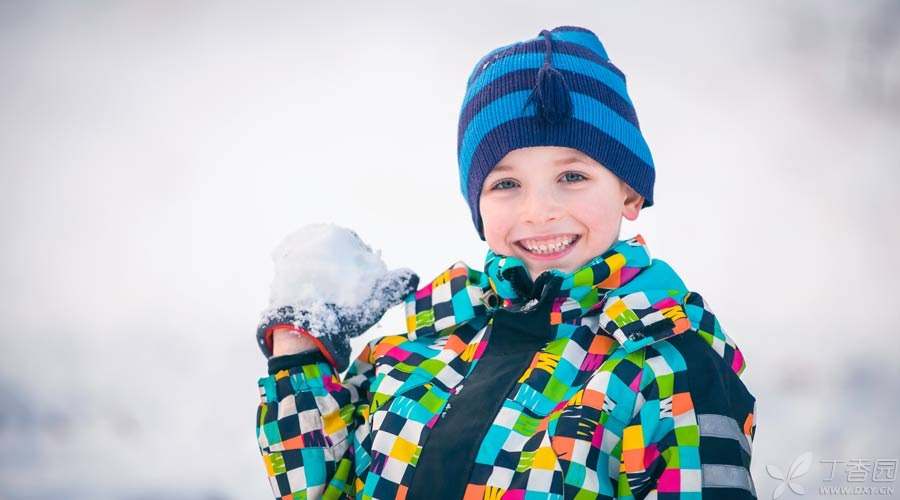
In winter, strong winds, smog and severe cold are raging. Dr. Clove refers to the contents of the American Academy of Pediatrics (AAP) to teach you to accompany your baby through this winter in a warm and safe way.
What should the baby wear?
Generally speaking, in winter, the trick to dress children is to have one more than adults.
Specifically, the following two points need attention:
1. A few thin clothes are better than a thick one.
Before taking babies out, they need to be warmed up. Some parents will wrap their children in cotton bags in two or three thick clothes. In fact, wearing multiple thin clothes is better than wearing one thick one to keep warm, and the discomfort caused by sweat can be reduced a lot.
2. Keep your hands and feet warm
The baby’s peripheral circulation is not yet fully developed. Before going out, you must remember to put on warm socks, boots, gloves and hats for the baby.
What should the baby build?
Some parents are afraid that their children will be frozen and their beds will be covered with blankets, quilts, pillows and sheepskin. Little imagine, this is very dangerous. Many infant suffocation and sudden infant death syndrome occur because of these soft bedding.
How can we keep the baby warm?
One-piece pajamas or sleeping bags can solve this problem.
If the room is too cold, you must cover something for your child, and you must pay attention to the following points:
- Use as light and soft a blanket as possible. After covering the child, tuck both sides under the mattress. Expose the baby’s face and neck to prevent suffocation caused by blanket covering the baby’s face after moving.
Which health problems deserve attention?
Step 1 Dry
In winter, children are prone to nosebleeds and their skin is drier. What about how’s care of baby’s chapped skin?
If your child has nosebleeds in winter, you can do this:
- Put a humidifier in his room at night; Use saline to drop your child’s nose or Vaseline gel. If the bleeding is serious or repeated, take the child to see a pediatrician.
Many pediatricians suggest that babies take baths 2 to 3 times a week. In winter, the skin is especially dry and it is not suitable to take baths too frequently.
2. Influenza
In winter, indoor ventilation decreases and children are more likely to catch colds or flu. Therefore, although cold weather does not cause colds or flu, the epidemic of colds in schools and kindergartens is more common in winter.
In addition to taking children to wash their hands frequently and teaching them to bend over when coughing or sneezing, vaccination is also a preventive measure worth considering.
About 80% of influenza occurs from January to March each year. Infants over 6 months old can be vaccinated with influenza vaccine, which can reduce the risk of the disease.

3. Frostbite
Sometimes even wearing gloves, hats, socks and boots, children’s fingers, toes, nose and ears will still suffer frostbite. These parts are located at the distal end of the limb and are easily frostbitten after being stimulated by freezing cold.
After frostbite, the child will feel the skin burning pain or numbness like burning, and the frostbite part looks pale, gray and even blistering.
At this time, parents need to let their children return to the room as soon as possible and soak their frostbitten hands or feet in warm water of about 40 degrees. If the frostbitten nose, ears and lips can be covered with warm wet cloth for 5 to 10 minutes.
Attention, do not use hot water at this time, and do not rub frostbite parts!
After using warm water for 5 to 10 minutes, wrap the child in dry clothes or blankets and let him drink some hot drinks. If the numbness persists for several minutes, you may need to take the child to the emergency department.
4. Hypothermia
The development of children’s thermoregulatory centers is not perfect. Exposed to cold environment, children are likely to have body temperature lower than normal.
This kind of situation usually occurs when the child wears too little or the clothes are wet. Once hypothermia occurs, the disease progresses much faster than that of adults.
Therefore, once the child shows the following performance, he must call 120:
- The child could not help shaking and his skin was cold. After catching cold, the child becomes dull or confused. Measuring the body temperature found that the body temperature dropped further.
Before the ambulance arrives, be sure to move the child indoors, help him take off all wet clothes, wrap the child with blankets or warm clothes, and make the child as warm as possible.
What should be paid attention to when participating in winter sports?
Winter is a good time to skate and ski. Parents need to know some safety matters before playing these two sports.
-
Sunscreen: Winter sun can still cause sunburn, especially after snow reflection. Therefore, before exercise, apply sunscreen to bare skin and consider using sunglasses.
-
Stay awake: Before skiing or skating, drinking alcoholic beverages or taking drugs that cause drowsiness may cause danger. If you want to play these two sports, you need to ensure that your child is awake.
-
Limit time: In order to prevent hypothermia and frostbite, parents need to reasonably set the time for going out for activities. After a period of time, children should return to the room to keep warm.
When skating, children need to pay attention to these aspects:
- Choose a safe and legal skating rink to prevent skating from cracking. Wear helmets, knee pads and elbow pads, especially when you start learning. In a crowded crowd, always slide in the same direction. Avoid excessive speed; Never go skating alone; When skating, don’t chew gum or eat granular foods such as sugar and peanuts.
When skiing, attention should be paid to these aspects:
- Choose a children’s ski resort and find a qualified coach to guide. If you have skiing experience, you can ski on the hillside, but avoid crowded hillsides or places with obstacles such as trees. Before skiing, be sure to wear helmets and goggles, and ensure that the equipment is of appropriate size and can be safely fixed. When children ski, parents must always accompany them. For older children, if they do not need parents’ company, they must have companions.
Finally, how do you exercise in smoggy days? For the sake of children’s health, it is better to stay at home. Clean air will make children’s lungs develop better.
By sue
Editor: Chuyang
Clove Garden is exclusively authorized and cannot be reproduced without permission.
Photo Source: Shutterstock.com, Station Cool Hailuo Creative
